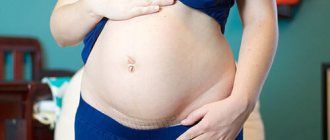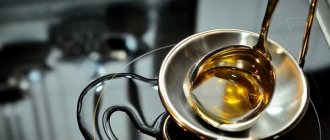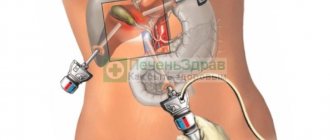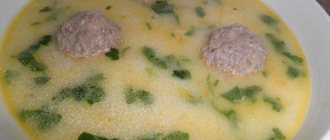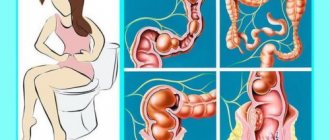Enema and childbirth
In the Soviet Union, all maternity hospitals adopted the practice that cleansing the intestines before childbirth is mandatory. And today, most maternity hospitals continue to perform enema procedures for pregnant women. It is worth noting that the obligation to carry out the procedure is excluded, solely by voluntary consent.
The manipulations take a little time. Execution is carried out using standard methods. To do this, the woman lies on her side. In the absence of discomfort, a pregnant woman can get on all fours. The tip of a rubber hose is inserted into the rectum, and liquid is gradually poured in. You need to wait 10 minutes. and go to the toilet. If emptying is not complete, repeat the procedure.
There is no pain when administering an enema. A discomfort may occur. To eliminate unpleasant sensations, you need to do the following:
- Get information about the location of the toilet so you don't have to search.
- When fluid enters the rectum, the muscles relax, leaving room for free penetration into the canals. The process will go faster and easier.
- After finishing the enema, you should squeeze the anus, not allowing the solution to come out prematurely.
- Calm down, remove the fear of the enema. The volume of fluid injected is not as large as it might seem at the beginning of the procedure.
- In order for all the contents to come out of the intestines, you need to spend a little more time in the toilet.
However, not all pregnant women undergo a forced bowel cleansing procedure. Eg:
- The maternity hospital does not practice this procedure.
- Labor is of an emergency nature.
- Late arrival of the woman in labor on the territory of the maternity home, the baby is already leaving, there is no time for enema procedures.
- A pregnant woman has complications that do not allow colon cleansing, as well as contraindications to enema procedures.
When a doctor directs a woman in labor to undergo procedures, she expects positive results. Goals of enema:
- The birth process will be easier, labor will be calmer due to the absence of feces in the intestines.
- During childbirth, fetal movement becomes freer, fecal stones do not interfere with the baby’s progress towards the exit.
- The expectant mother is not distracted by the state of her intestines, but is completely focused on the birth of the child.
Features of the use of laxatives during lactation
First of all, a woman after a cesarean section needs to pay attention to nutrition and her psychological state. If you cannot cope with constipation on your own, you need to seek help from a doctor.
Abdominal pain is debilitating, constipation exhausts an already weakened body, and the supply of insufficient nutrients can lead to cessation of lactation.
Usually, bowel problems in the postpartum period disappear on their own after 2-3 weeks. If constipation bothers you for longer, you should consult a doctor. Self-medication is prohibited, because a significant part of medications can pass into breast milk, which means it can harm the baby.
A balanced diet will help restore intestinal function. The bulk of the diet should consist of foods high in fiber (vegetables, fruits, berries and grains). It is recommended to eat as much fermented milk products as possible, because they improve intestinal microflora.
It is recommended to avoid products that increase gas formation:
- cabbage;
- semolina;
- rice porridge;
- bananas;
- grapes;
- smoked and pickled products;
- fatty foods;
- fresh bread products.
Gymnastics
In order to get rid of constipation as quickly as possible, you can perform special exercises.
- Lie on a flat, hard surface on your left side.
- Pull your right leg, bent at the knee joint, towards your chest.
- The left leg is straightened.
- Stay in this position for 5-7 minutes.
- Repeat with your left leg, lying on your right side.
If you do the exercises regularly, improvement will not be long in coming. This warm-up improves the passage of gases and eliminates constipation.
Massage
Movements during massage should be careful, you need to be careful not to injure the sutures after cesarean section. For atonic constipation, it is recommended in the morning, while lying on the bed, to stroke the skin around the navel and down towards the perineum. The massage should last about 5 minutes. For spastic constipation, massage is performed by stroking the entire surface of the abdomen clockwise.
Lifestyle
When dealing with constipation after a caesarean section, special attention is paid to the woman’s daily routine. A young mother should sleep well and have proper rest. Walking will be useful. You can ask your doctor to create a set of exercises to combat constipation.
Since a woman’s body is in a state of stress after the birth of a child, she needs to learn to relax. The method can be anything: aromatherapy, relaxing baths and contrast showers are suitable, it is useful to master a special breathing technique, do yoga or light aerobics.
Before using any medications, medical consultation is required. In this situation, preference is given to medications made from natural ingredients.
Usually, after a natural birth, a woman experiences spastic constipation. Problems with this type of stool arise due to the tense state of the colon or the lack of a passage in the intestine sufficient for defecation.
More often, the causes of difficult bowel movements are either fear of pushing if a woman has sutures or hemorrhoids, or increased pressure from the distended uterus on the intestinal walls. Therefore, there is no physiological reason for difficult bowel movements.
Treatment of this type of constipation is carried out on the basis of delayed osmotic action drugs, which include lactulose or lactitol. For example, Duphalac, Normaze syrups, Exportal powder.
In addition to constipation, a woman may experience other consequences of childbirth, such as hemorrhoids or anal fissures. Then the use of laxative suppositories, even the safest glycerin suppositories, is prohibited.
Also allowed after childbirth, laxatives include salt preparations - Fortrans, Forlax.
The use of a herbal preparation – Mucofalk – is practiced.
Since many manufacturers have not tested drugs on the influence and penetration of their components into breast milk, drugs whose instructions do not indicate this should be used with extreme caution or should be completely abandoned.
Such laxatives and their analogues include Bisacodyl, Senade, Regulax, Magnesia, Fitolax, Gutalax, Chitosan-Evalar, etc. Sena-based medications are also prohibited during lactation.
Breastfeeding is not easy. The quality and composition of babies’ favorite food depends on the mother’s food and her lifestyle. Breast milk is a source of nutrients for a small child. It contains substances that are found in medications. During pregnancy and lactation, most medications are contraindicated to take so as not to harm the health of a small child.
- The instructions should not contain instructions prohibiting the use of laxatives during breastfeeding. Most pharmacological drugs are contraindicated during pregnancy and after childbirth. Contact your doctor for advice. If he writes out a prescription, do not forget to check for yourself whether there are any contraindications in the instructions for taking a laxative during lactation.
- It is strictly forbidden to exceed the dosage of the drug or the frequency of its administration. Any drug, if used incorrectly, causes an overdose, an allergic reaction, even shock.
- If a young mother takes any medications for health reasons, you need to carefully study the interaction of laxatives and basic medications. Some medications can enhance the therapeutic effect, while others suppress it. To eliminate negative aspects, it is recommended to consult a doctor.
- The laxative should be available in a convenient form, in the form of tablets, capsules, suppositories, drops for nursing mothers. It is important that the drug can be used for a long time.
Constipation threatens pain, deterioration of general well-being, decreased functioning of the digestive tract, fecal intoxication, and impaired health of the newborn. The laxative should be selected by a specialist, taking into account the individual characteristics of the mother and child.
During lactation, a young mother is responsible for her health and the health of her baby. Before using a laxative, it is better to consult a doctor.
According to statistics, in recent years the number of cesarean sections has increased due to age (people give birth after 30) and poor health of the mother. Doctors say that such women in labor are more likely to have problems with bowel movements.
You can relax mommy in different ways, the main rule is to use safe medications. To get rid of constipation during the lactation period after a cesarean section, you should follow simple rules:
- If a woman does not have bowel movements for three days, her condition should be alleviated by performing a cleansing enema. Modern medicine is moving away from the old, large enemas, giving way to new safe methods of emptying. Microlax is a small microenema filled with medicine. It is easy to administer, safe, effective, and most importantly, individual.
- At home, a woman can independently perform a regular enema.
- Postoperative mothers can use inexpensive glycerin suppositories. They do not pass into breast milk and do not affect the health of the baby. It is better to use them periodically, not constantly.
- After a cesarean section, it is allowed to be treated with the medications described above.
The main condition for successful treatment is to eliminate the unpleasant consequences of taking laxatives. To do this, it is recommended to carefully read the instructions before using the medicine. It is necessary to pay attention to conditions in which the use of laxatives is contraindicated. Common contraindications include:
- individual intolerance to drugs, aggravated allergic history;
- the woman has hemorrhoids or rectal fissures. In such cases, mild, easily excreted drugs are used;
- the young mother has acute/chronic intestinal obstruction;
- clinical picture of acute abdomen (exacerbation of pancreatitis, cholecystitis, development of appendicitis, ovarian apoplexy, peritonitis);
- dehydration conditions of the body (dehydration, hypovolemic shock).
Preventive measures are aimed at preventing the occurrence of an unpleasant symptom:
- Normalization of the work and rest regime (involve relatives and dad to help the young mother).
- Maintain proper nutrition and increase consumption of foods high in fiber.
- Provide psychological comfort to the mother (limit stressful situations).
Every mother in labor knows that childbirth is only the beginning of a new life. Constant constipation is an unpleasant phenomenon. To get rid of stool retention, you need to choose a safe laxative.
The article has been approved
by the editors
A woman should think about the need to improve bowel function immediately after the operation. The hospital will be able to provide assistance in the form of enemas and medications. Subsequently, the concern for intestinal health falls on the young mother.
- Food. Divide meals into portions and time. The diet contains healthy foods with fiber and vitamins.
- Drink. Do not violate the drinking regime. Consume a daily dose of 2 liters.
- Activity. Try to stand up after the operation, despite weakness. Don't stop and don't relax. For the full healthy functioning of the intestines, the peritoneal muscles need to be kept in good shape.
- Charger. To activate the digestive tract, you need to do an exercise: lying on your right side, try to pull your left limb (leg) towards your stomach. The right one is extended at this time. Performing 3-5 approaches, pressure is applied to the intestines, it begins to work.
Enema before caesarean section
The birth of a child through surgical intervention is being practiced more and more often. The reasons for this decision are varied. The main factors leading to the inevitability of a CS:
- The risk of a threat to the health and life of the baby during natural childbirth.
- There is a high risk of loss of health or death of the mother if the child is allowed to be born independently.
As a rule, this operation is planned. The exception is natural childbirth with complications, when only a CS can save the mother and baby.
Any surgical intervention involves performing enema procedures and cleansing the intestines of contents. An enema before a cesarean section will avoid unplanned penetration of feces into the wound and the development of secondary infection. Additionally, an enema before childbirth greatly facilitates the postpartum period and speeds up recovery.
CS is a violation of the integrity of the skin of the abdomen, the inner layer of the epidermis and the uterus. In the first postoperative days, attempts to tense the abdominal muscles will be painful, even when taking painkillers. Therefore, a clean intestinal tract will eliminate the need to visit the toilet on these days and will reduce pain until the stitches are completely healed.
Also, performing forced cleansing of the intestinal tract during cesarean section has a preventive effect. After childbirth or surgery, it is often observed that women cannot go big. Fecal masses release toxins and gases, bloating and pain occur, inflammatory processes develop, and the risk of complications increases.
Causes of constipation after cesarean section
The causes of constipation can be physiological or psychological. First of all, every woman worries about the condition of the sutures after surgery, in particular there are fears that they may come apart when straining. It is also impossible to avoid psychological stress due to caring for a child and a new status. There are many more physiological reasons for constipation. The most common include:
- sudden hormonal changes in the body after childbirth;
- an irrationally selected diet for a nursing mother and insufficient fluid intake;
- stretching and weakening of the abdominal muscles;
- changes in the position of the intestine and a decrease in its peristalsis;
- the effect of anesthesia during surgery;
- hemorrhoids that developed during pregnancy;
- compression of the intestines by the enlarged uterus, which is observed for about 8 weeks after childbirth.
Signs of constipation and an approximate diet for a woman after a cesarean section
A woman in labor is diagnosed with constipation if the following signs are present:
- absence of stool for more than 2 days;
- severe pain during defecation;
- lower abdominal pain;
- nausea, belching, lack of appetite;
- cracks in the anal area, bleeding when trying to defecate.
All these symptoms indicate the presence of such a problem.
Constipation is divided into two types:
- atonic constipation, which is associated with weak motor activity of the intestinal muscles;
- spastic constipation, which appears if intestinal motility is normal, but the rectum, on the contrary, is clamped.
Constipation that occurs in women after cesarean section is classified as atonic.
An incision in the abdominal cavity leads to a deterioration in blood circulation at the nerve endings; they react poorly to irritants, so intestinal motility decreases, and hard fecal formations accumulate in the rectum.
Antibiotics taken during caesarean section and during the postpartum period aggravate the general condition of the mother's intestines and lead to constipation.
The problem of constipation after cesarean section is very serious. The woman begins to strain very much during the act of defecation, which can lead to divergence of postoperative sutures in the abdominal cavity and in the perineum.
Constant abdominal pain and a general feeling of discomfort in the pelvic area can even stop lactation.
If constipation is diagnosed after a cesarean section, many do not know what to do.
In order to get rid of this phenomenon, there are many ways. One of them is the normalization of the diet of a young mother.
In this case, you need to follow the following recommendations:
- on the 1st day after birth, eating is prohibited, but drinking plenty of fluids, on the contrary, is recommended - it helps soften the stool in the intestines and improve its motor activity;
- on the 2nd day, the woman in labor can take low-fat fermented milk products or drink broth, which should be cooked from lean meat “in third water.” Liquids still need to be drunk in large quantities;
- on the 3rd day, you can introduce solid food into the diet in small quantities - a baked apple, a little porridge boiled in water, a small piece of hard low-fat cheese. You need to eat little by little 5-6 times a day, washing down your meals with plenty of still water or rosehip infusion.
Following these recommendations will lead to mild relief from constipation 3-4 days after cesarean section.
Frequent symptoms of constipation after cesarean section
A new mother has a lot of troubles; her meals are irregular. This is what is often associated with problems with going to the toilet.
You can talk about constipation if:
- there was no bowel movement for more than 2 days;
- the act of defecation is accompanied by pain;
- pain appears in the left side of the abdomen;
- appetite worsens;
- nausea and belching appear;
- a woman is worried about flatulence and a constant feeling of fullness in the intestines;
- irritability;
- pain in the rectum;
- defecation leads to rectal fissures and bleeding.
Medicinal ways to relieve constipation after surgery
There are situations when, despite following dietary recommendations, constipation returns after some time and becomes chronic.
In this case, special gymnastics can help a woman:
- you need to take a lying position on your right side;
- press your left leg to your stomach;
- Spend about 5 minutes in this position.
This exercise stimulates the release of gases and improves intestinal motility.
If the above measures do not help, then you can eliminate the problem of constipation after childbirth using medications.
However, we must not forget that regular use of laxatives is addictive and can “wean” the intestines from independent motor activity.
In addition, not all medications can be used during the lactation period. Approved for use during breastfeeding are such drugs as Fortrans, Duphalac, Microlax enema, and various glycerin suppositories.
Provided there is no bowel movement by the third day after cesarean section, these drugs are used as follows:
- Microlax quickly liquefies stool and causes the urge to defecate within 10 minutes after use. Available in convenient packaging, thanks to which the woman in labor can administer the enema herself;
- glycerin suppositories are used in case of emergency, if a woman has not had a bowel movement for more than three days. They act on the lower parts of the large intestine without affecting the composition of breast milk. Their effect is immediate, which leads to rapid relief of the general condition;
- "Duphalac" in tablets or syrup, the main ingredient of which is lactulose, is a natural-based laxative, which makes it approved for use by nursing women. When using it, you must carefully follow the instructions for use, do not stop taking it after the first bowel movement, otherwise the problem of constipation will return literally the next day;
- the drug "Fortrans" is a sachet with a dry mixture. It is a very strong laxative due to its effective liquefaction of intestinal contents. The mixture from the bag is diluted in 1 liter of water and the resulting liquid must be drunk throughout the day.
MICROLAX ®: help with constipation after caesarean section
MICROLAX ® is a microenema that helps gently relieve constipation. This is a drug with a high safety profile and has no age restrictions for use. Within 5–15 minutes¹, active substances help soften stool, making it easier to remove from the body. Thanks to local application, microenema components do not enter the general bloodstream.
MICROLAX: how to feel joy again?
1 Dietetics. Management. Edited by A. Yu. Baranovsky. 4th edition; St. Petersburg 2012
2 In accordance with the instructions for medical use of the drug MICROLAX ®, the product promotes the onset of action 5–15 minutes after use.
Folk remedies for the treatment of constipation
If a young mother is afraid to use medications to treat constipation immediately after surgery, then for this case there are also folk remedies to combat this problem that are safe for both the mother and the baby.
- fig decoction. Mix 2 tablespoons of finely chopped fresh figs in a glass with warm water or milk and leave for 20 minutes. Take 1 tbsp. l. 4-5 times a day;
- herbal infusion. You need to take 1 tbsp. l. a mixture of valerian root, anise, nettle, mint leaves, strawberries and chamomile flowers. Herbs are taken in equal proportions. Next, you need to pour boiling water over the herbal mixture, place it in a thermos and leave for about 2 hours. Drink 100 g of infusion 2 times a day;
- decoction of seeds. Fennel, anise and caraway seeds are taken in equal quantities and poured into 200 g of boiling water, after which they are infused in a thermos for 2 hours. The infusion is consumed within 1 day in 2-3 doses.
If you don’t have the energy and time to prepare these infusions and decoctions, then an enema with warm water and a drop of vegetable oil will help get rid of constipation.
A handful of prunes, grated boiled beets or crushed nuts, eaten with kefir on an empty stomach, will ease the general condition of a nursing mother.
After a caesarean section, women often brush off problems with constipation, ignoring them.
However, suffering with defecation should not poison the joy of motherhood, and if constipation is observed for a long time, they are accompanied by hemorrhoidal problems and fissures in the anal canal, then the woman should immediately see a doctor.
Constipation can be caused not only by physiological reasons associated with a cesarean section, but also be the result of an infection that can easily be picked up by the mother’s body, weakened after anesthesia.
How to deal with constipation after cesarean section
Young mothers are often tormented by the question: what to do with constipation after a cesarean section? Before starting treatment, it is necessary to consult with a therapist and pediatrician (if the child is breastfed). Perhaps, for greater effectiveness, the doctor will suggest complex therapy rather than using one method.
First of all, to normalize intestinal function, especially with atonic constipation, it is necessary to reconsider the diet of the young mother and her drinking regimen, which should be at least 1.5–2 liters of fluid per day. Experts recommend including cereals, vegetables, fruits, fermented milk products, drinks, and vegetable oil in the diet of a nursing woman. In case of postoperative constipation, you need to limit the consumption of semolina porridge, white breads, rice, potatoes, pears, and nuts. You will have to completely give up strong tea and coffee.
Drug treatment of constipation after cesarean section can only be prescribed by a doctor, taking into account the characteristics of the body and the method of feeding the newborn.
Laxatives used after natural childbirth
A laxative is prescribed immediately after childbirth or after a short period of time in order to get rid of the problem in the initial stages. Therapy should be comprehensive, leading to positive dynamics with an improvement in the general condition of the patient. The main stages of treatment for constipation:
- food should be fortified, enriched with microelements, fiber (fermented milk products, vegetables, fruits);
- increase water consumption to 1.5-2 liters. It dilutes stool, promotes the removal of feces from the intestines;
- the mother should engage in moderate physical activity (walking in the fresh air, simple exercises);
- taking safe laxatives.
When breastfeeding, you need to choose an effective, high-quality medication to combat constipation. It should weaken, not remove electrolytes and nutrients from the mother’s body, and be safe for the baby. List of popular medications that fight this unpleasant phenomenon:
- Duphalac is presented on the pharmacological market in the form of syrup. It contains water, lactulose, and has a strong laxative effect. It is considered a harmless, cheap, natural drug for a mother and her baby. Duphalac is not able to pass into breast milk. The medicine has a double effect: it empties the intestines and helps normalize the microflora. It is considered the safest for the child and mother. It is allowed to take for a long period.
- Guttalax consists of sodium picosulfate. The drug acts only at the level of the colon and activates the evacuation of intestinal contents to the outside. Does not affect the digestion of food, does not pass into breast milk. Maintains electrolyte balance. It is recommended to drink at night to get results in the morning.
- The instructions for using Fortrans do not contain information about possible use during pregnancy or lactation. Doctors, despite this fact, actively prescribe medicine to women. It turns out to be a good effect.
- Bisacodyl affects the nerve endings in the intestines and triggers intestinal peristalsis. The drug can be used in the elderly, pregnant, lactating, and operated patients. It is suitable for patients with hemorrhoids, proctitis, anal fissures. Available in tablets, drink 1 r/day 30 minutes before eating.
- Forlax is a tablet drug that is classified as an osmotic laxative. After oral administration, the volume of stool inside the large intestine increases. Pediatricians like to attribute it. A well-known medical rule says that it is possible for children, but it is also possible for pregnant women. Forlax will effectively cope with a delicate problem.
Loading …
Glycelax
Tips for non-drug treatment of constipation during lactation
Before taking any medications for constipation, it is advisable to try non-drug therapy, namely:
- change in eating behavior,
- use of traditional medicine advice,
- lifestyle correction.
Diet as a remedy for constipation during lactation
The diet of a nursing woman is already full of restrictions, and when the mother also has problems with bowel movements, her menu is significantly reduced. It is important to approach the daily diet wisely so as not to deprive yourself and your child of nutrients and vitamins.
Table: Foods that prevent constipation and lead to constipation
| Prevent constipation | Lead to constipation |
Dairy products:
|
|
Berries and fruits:
| Cereal decoctions:
|
Vegetables and greens:
| Flour products:
|
Rough vegetable food:
| Hot drinks:
|
Sugary substances:
| Beverages:
|
| Salt and salty foods | Decoctions from:
|
Cold drinks:
| Canned meat and fish |
Dried fruits:
| Chocolate and chocolate candies |
Traditional medicine tips for constipation during lactation
For a comprehensive effect on the body, in addition to diet, you can try advice from traditional medicine. It is important to exclude allergic reactions of both mother and child.
Traditional medicine recommendations:
- drink cool liquid (water, juice, date decoction) on an empty stomach,
- eat honey, raw carrots or an apple with peel on an empty stomach,
- every day before the main meal, eat 100 g of raw vegetables,
- eat at least 500 g of fruits and vegetables per day,
- drink date decoction on an empty stomach,
- consume wheat bran,
- Before going to bed, drink a glass of cool infusion of rose hips without seeds.
An excellent remedy for constipation is to eat 2 raw apples with peel every day.
Self-massage as a remedy for constipation during lactation
Self-massage techniques will help you establish independent bowel movements:
- Go to bed (in the morning, on an empty stomach),
- Using your right hand (wrapped in a damp, cold towel), stroke the stomach on the right, moving up and down to the ribs, pressing lightly,
- Repeat 5–10 times,
- With your left hand (also wrapped in a damp cold cloth), stroke the stomach on the left, using down-up movements (to push feces into the rectum),
- Repeat 5–10 times,
- Change hands 3-4 times,
- After the massage, go outside or walk around the house, do active household chores,
- Repeat these manipulations every day.
Video: Improving Bowel Function with Exercise
You should not expect results on the same day. Gradually, the intestines will begin to work properly on their own, especially if, in addition to self-massage, you do light gymnastics.
Video: exercises for constipation
Light exercises as a remedy for constipation during lactation
You should do gymnastics in the morning, immediately after waking up:
- Go to bed,
- Raise your body without leaning on your hands
- Repeat 20–30 times, very slowly and carefully,
- Get on the floor
- Put your hands on your hips
- Do 30 squats, slowly.
You can do both self-massage and gymnastics, or choose one to your taste. The main thing is not to stop there. Even after complete restoration of intestinal function, preventing constipation will not hurt.
Many people, including nursing mothers, face the problem of constipation. It is advisable to begin treatment of a nursing woman with non-drug methods (diet, physical activity). If these measures are ineffective, the attending physician prescribes a laxative drug, which must meet high safety standards in relation to the mother and child.


